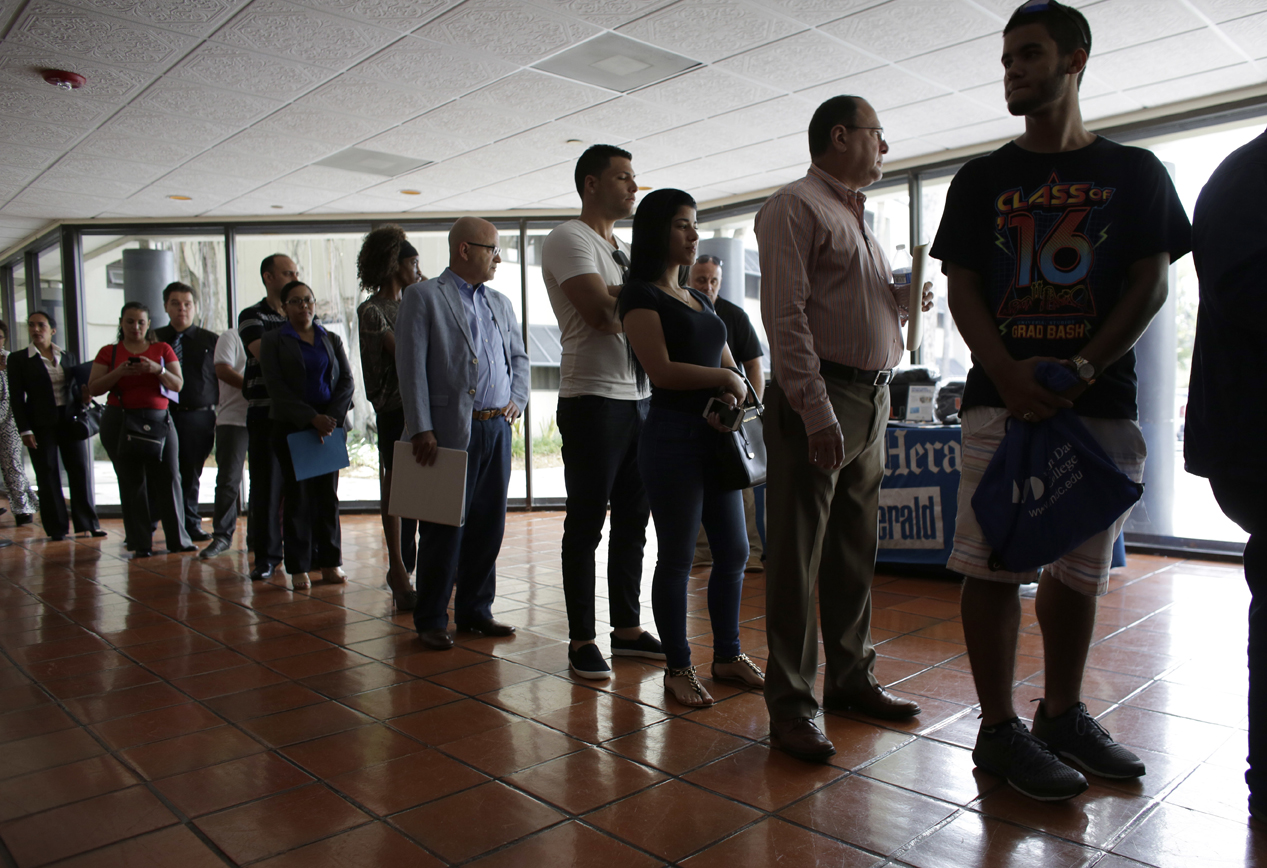WASHINGTON (AP) — Hiring has been strong in the past year in many presidential campaign swing states, a possible hurdle for GOP candidate Donald Trump, who has sought to capitalize on economic distress.
Employers have added jobs in the past 12 months at a faster pace than the national average in Colorado, Florida, Michigan and North Carolina, the Labor Department said Friday.
Job gains have been solid but slightly below the national rate in other battleground states, such as Ohio and Virginia.
On a monthly basis, hiring rose significantly in 15 states in July compared with June, the government said. The biggest percentage gains were in North Dakota, Vermont and Maine. The only state to lose a large number of jobs in July was Kansas, which shed 5,600.
Hiring was healthy nationwide in July, with employers adding 255,000 jobs, following a gain of 292,000 in June, the most in eight months. The U.S. unemployment rate is 4.9 percent.
Nationwide, total jobs rose 1.7 percent in July from a year earlier. That is down from a 2 percent pace in 2015 and 2.2 percent in 2014, which was the healthiest two-year increase since 1998 and 1999.
In Florida, traditionally a close-fought state in presidential campaigns, employers have added 250,200 jobs in the past year, an increase of 3.1 percent. In Colorado, payrolls have grown 74,200, or 2.9 percent. Michigan’s job totals rose 2.5 percent and North Carolina’s, 2.2 percent.
There has been extensive debate among economists and analysts in recent weeks over the extent to which economic hardship is driving Trump’s support.
In the Republican primaries, Trump won strong majorities in hard-hit counties in Appalachia and the deep South, particularly parts of West Virginia, Virginia and Kentucky that were devastated by a sharp downturn in the coal industry.
Yet an analysis earlier this month by Jonathan Rothwell, a senior economist at Gallup, found that Trump supporters nationwide aren’t worse off than the rest of the country, based on household incomes and employment.
Rothwell found that the economy may still be an indirect factor. Those without college degrees, working in blue collar occupations and living in areas with limited economic mobility were more likely than other Americans to support Trump.
But voters living in mostly white areas were also more likely to back Trump, suggesting that cultural anxieties over issues such as immigration are also a key factor, Rothwell found.
Overall, standard economic models suggest a healthier economy is mostly beneficial for an incumbent political party.
Other swing states have also seen solid job gains. Employers added 78,800 jobs in Ohio in the past 12 months, a gain of 1.5 percent. Virginia’s total employment grew 1.5 percent in the past year.
In Pennsylvania, hiring was weaker that the national pace, increasing 58,000 or just 1 percent.
The report also showed that South Dakota currently has the lowest unemployment rate at 2.8 percent, followed by New Hampshire with 2.9 percent. Alaska, which has suffered from a drop in oil prices since 2014, had the nation’s highest rate at 6.7 percent. That figure remains unchanged from June.
—
Read more news:
Troopers: Bear mauls two guides in Southeast after group got close to cub

